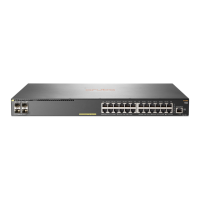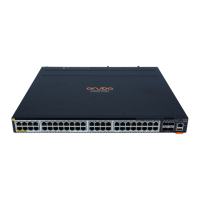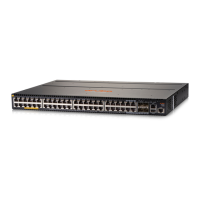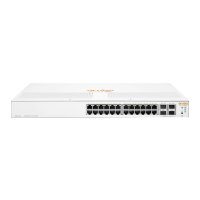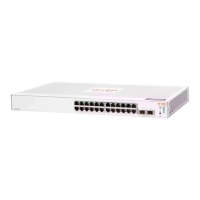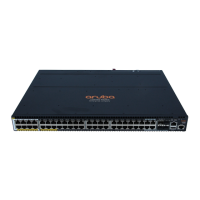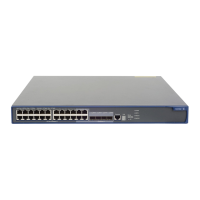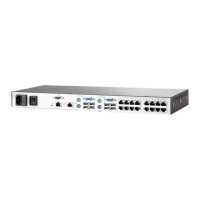Do you have a question about the HP Aruba JL255A and is the answer not in the manual?
Explains SNTP operating modes: Broadcast, DHCP, and Unicast, for time synchronization.
Details NTP's role in synchronizing time across distributed servers and clients for event correlation.
Outlines the procedure to select and enable a time synchronization protocol like TimeP, SNTP, or NTP.
Enables validation of SNTP messages from servers before updating network time, enhancing security.
Command to configure key-id, authentication mode (MD5), and key-value for SNTP authentication.
Steps to configure unicast or broadcast mode for SNTP authentication and change between modes.
How the switch requests time updates from multiple SNTP servers when unicast time polling is enabled.
Explains NTP, its use of UDP, strata, and security features like encrypted authentication.
Command used for authentication of NTP server by the NTP client.
Command used to configure NTP servers, including IP address, key, and polling intervals.
Guides on viewing port status and configuring parameters like speed, duplex, and flow control.
Monitors link state between switches, blocking ports if link fails to ensure bidirectional traffic.
Overview of considerations for planning a PoE application, including port assignments, security, and power requirements.
Details how power allocation is prioritized when PD demand exceeds available power.
CLI commands for enabling/disabling PoE, setting priority, and configuring thresholds.
How LLDP information can be used for automatic power configuration based on PD capabilities.
Covers methods for configuring trunks, including Dynamic LACP and Static trunks.
Details how the switch automatically negotiates trunked links using LACP active or passive modes.
How the switch automatically or manually configures dynamic or static LACP trunk groups.
Controls traffic rate on a per-port basis for inbound or outbound traffic, dropping excess traffic.
Feature to help debug network activity like link flaps or transceiver issues, and troubleshoot multicast or broadcast storms.
Steps for configuring SNMPv3 access, including enabling, user setup, communities, and trap receivers.
Procedure for configuring SNMPv3 users and assigning them to different security groups for access levels.
How SNMPv3 communities are mapped to Group Access Levels for version 2c or version 1 access.
Procedure for downloading switch software using the TFTP protocol.
Using secure methods like SCP and SFTP via SSH tunnel for file transfers, offering encryption and authentication.
Steps to configure a local mirroring session to monitor traffic on a specific port or VLAN.
Restores a given configuration as the running configuration without reboot.
Lists commands for configuring various IP SLA parameters like clearing history, setting thresholds, and scheduling tests.
Details UDP Jitter and UDP Jitter for VoIP SLA types for assessing network suitability for voice/video traffic.
Allows tunneling traffic to a Mobility Controller on a per-port basis for policy enforcement.
Enables tunneling specific client traffic based on user roles for centralized policy and authentication.
Explains SNTP operating modes: Broadcast, DHCP, and Unicast, for time synchronization.
Details NTP's role in synchronizing time across distributed servers and clients for event correlation.
Outlines the procedure to select and enable a time synchronization protocol like TimeP, SNTP, or NTP.
Enables validation of SNTP messages from servers before updating network time, enhancing security.
Command to configure key-id, authentication mode (MD5), and key-value for SNTP authentication.
Steps to configure unicast or broadcast mode for SNTP authentication and change between modes.
How the switch requests time updates from multiple SNTP servers when unicast time polling is enabled.
Explains NTP, its use of UDP, strata, and security features like encrypted authentication.
Command used for authentication of NTP server by the NTP client.
Command used to configure NTP servers, including IP address, key, and polling intervals.
Guides on viewing port status and configuring parameters like speed, duplex, and flow control.
Monitors link state between switches, blocking ports if link fails to ensure bidirectional traffic.
Overview of considerations for planning a PoE application, including port assignments, security, and power requirements.
Details how power allocation is prioritized when PD demand exceeds available power.
CLI commands for enabling/disabling PoE, setting priority, and configuring thresholds.
How LLDP information can be used for automatic power configuration based on PD capabilities.
Covers methods for configuring trunks, including Dynamic LACP and Static trunks.
Details how the switch automatically negotiates trunked links using LACP active or passive modes.
How the switch automatically or manually configures dynamic or static LACP trunk groups.
Controls traffic rate on a per-port basis for inbound or outbound traffic, dropping excess traffic.
Feature to help debug network activity like link flaps or transceiver issues, and troubleshoot multicast or broadcast storms.
Steps for configuring SNMPv3 access, including enabling, user setup, communities, and trap receivers.
Procedure for configuring SNMPv3 users and assigning them to different security groups for access levels.
How SNMPv3 communities are mapped to Group Access Levels for version 2c or version 1 access.
Procedure for downloading switch software using the TFTP protocol.
Using secure methods like SCP and SFTP via SSH tunnel for file transfers, offering encryption and authentication.
Steps to configure a local mirroring session to monitor traffic on a specific port or VLAN.
Restores a given configuration as the running configuration without reboot.
Lists commands for configuring various IP SLA parameters like clearing history, setting thresholds, and scheduling tests.
Details UDP Jitter and UDP Jitter for VoIP SLA types for assessing network suitability for voice/video traffic.
Allows tunneling traffic to a Mobility Controller on a per-port basis for policy enforcement.
Enables tunneling specific client traffic based on user roles for centralized policy and authentication.
| Product Number | JL255A |
|---|---|
| Product Series | Aruba 2930F |
| Device Type | Switch |
| Power over Ethernet (PoE) | Yes |
| PoE Budget | 370W |
| Rack Mountable | Yes |
| Input Voltage | 100-240 VAC |
| Input Frequency | 50/60 Hz |
| Jumbo Frame Support | Yes |
| Power Supply | Internal |
| Uplink Ports | 4 x 1/10G SFP+ |
| MAC Address Table Size | 16000 entries |
| Operating Temperature | 0°C to 45°C |
| Storage Temperature | -40°C to 70°C |
| Humidity | 5% to 95% (noncondensing) |
| Memory | 512 MB DDR3 |
